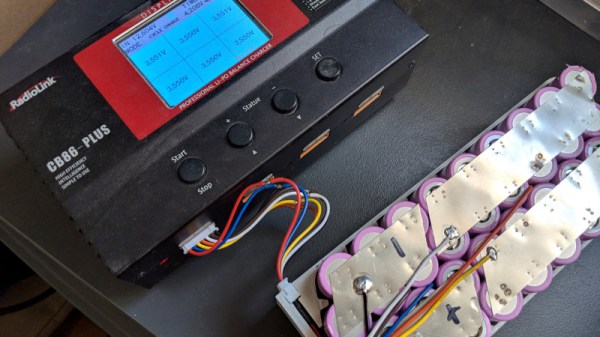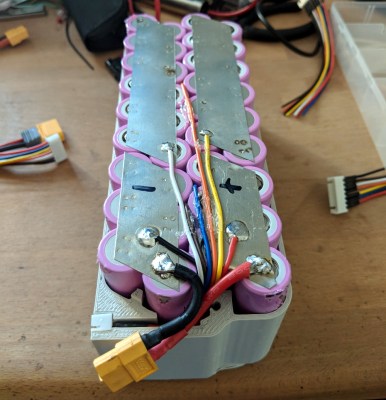If you have a portable gadget, the chances are you’ve probably used power banks before. What few could have predicted when these portable battery packs first started cropping up is that they would one day be used to power soldering irons. Dissatisfied with the options currently available on the market, [Franci] writes in with his own power bank specifically designed for use with his TS80 portable soldering iron.
The electronics side of this build is simple and easy to replicate, with 4 18650 Li-ion cells standard to most high-capacity power banks and an off-the-shelf Fast Charge module serving as the brains of the operation. The beauty of this project however lies in the design of the actual case, completely custom-made from scratch to be 3d printed.
Unlike most power banks, where the outputs stick out to the side and leave the connectors prone to being bumped and damaged, [Franci] engineered his case so the ports are stacked on top and facing inwards. That way, USB plugs are contained within the footprint of the power bank’s body, and therefore protected from bending or snapping off in the socket. He also gracefully provides all instructions needed to make your own, including a wiring guide and a reminder about safety when dealing with battery packs.
If you’re unfamiliar with the TS80 soldering iron, we’ve featured the younger sibling of the TS100 in a previous post. And if you think this power bank is too simple for you, don’t worry, we’ve got you covered.


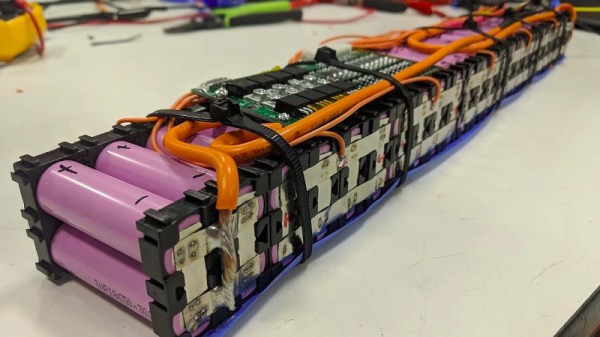


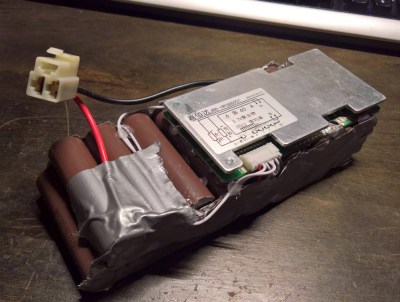

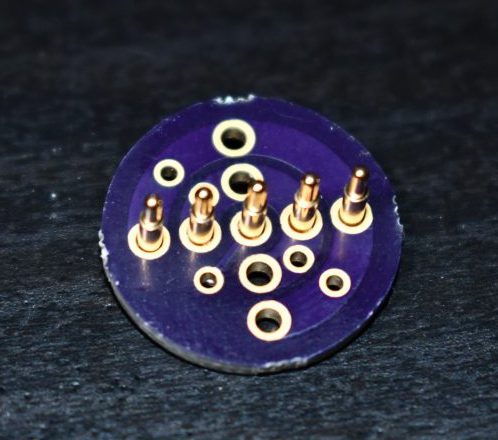
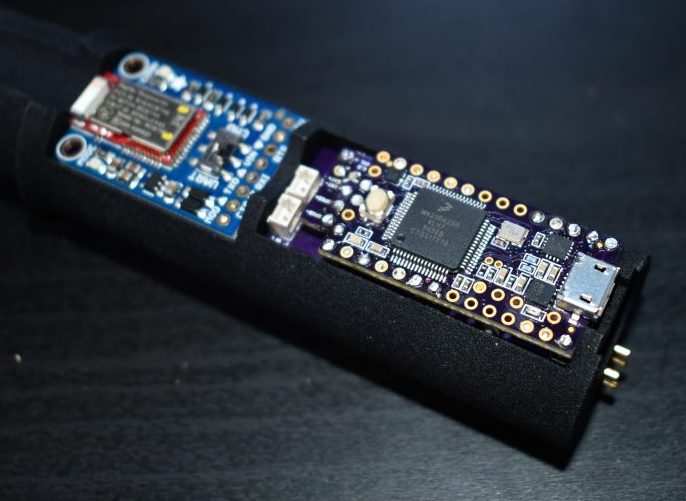 The hilt is filled with an assembly of 18650’s and a Teensy mounted with a custom shield, all fit inside a printed midframe. The whole build is all about robust design that’s easy to assemble. The main board is book-ended by perpendicular PCBs mounted to the ends, one at the top to connect to the blade and one at the bottom to connect to a speaker. Towards the bottom there is space for an optional Bluetooth radio to allow remote RGB control.
The hilt is filled with an assembly of 18650’s and a Teensy mounted with a custom shield, all fit inside a printed midframe. The whole build is all about robust design that’s easy to assemble. The main board is book-ended by perpendicular PCBs mounted to the ends, one at the top to connect to the blade and one at the bottom to connect to a speaker. Towards the bottom there is space for an optional Bluetooth radio to allow remote RGB control.
